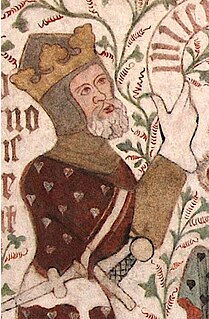 W
WValdemar IV Atterdag, or Waldemar (1320 – 24 October 1375 was king of Denmark from 1340 to 1375. He is mostly known for his reunion of Denmark after the bankruptcy and mortgaging of the country to finance wars under previous rulers.
 W
WThe Battle of Visby was fought in 1361 near the town of Visby on the island of Gotland, between the forces of the Danish king and the Gutnish country yeomen. The Danish force was victorious.
 W
WChristopher, Duke of Lolland, was the son of King Valdemar IV of Denmark and his wife, Helvig of Schleswig. Christopher was appointed duke in 1359 and also was selected to succeed as king.
 W
WGurre Castle was a royal castle situated in North Zealand, Denmark. Its ruins lie on the outskirts of Helsingør, close to the town of Tikøb on lake Gurre Sø at Gurre. The ruins have been excavated and are now restored.
 W
WHelvig of Schleswig was the queen of Denmark as the spouse of King Valdemar IV. She was the mother of Queen Margaret I of Denmark.
 W
WMargaret I was the queen who founded the Kalmar Union of the kingdoms of Denmark, Norway, and Sweden, spanning Scandinavia for over a century. Margaret was known as a wise, energetic and capable leader, who governed with "farsighted tact and caution," earning the nickname "Semiramis of the North". She was derisively called "King Breechless", one of several derogatory nicknames invented by her rival Albert of Mecklenburg, but was also known by her subjects as "the Lady King", which became widely used in recognition of her capabilities. Knut Gjerset calls her "the first great ruling queen in European history."
 W
WValdemar Atterdag holding Visby to ransom, 1361 is a historical painting by the Swedish historical painter Carl Gustaf Hellqvist (1851–1890).